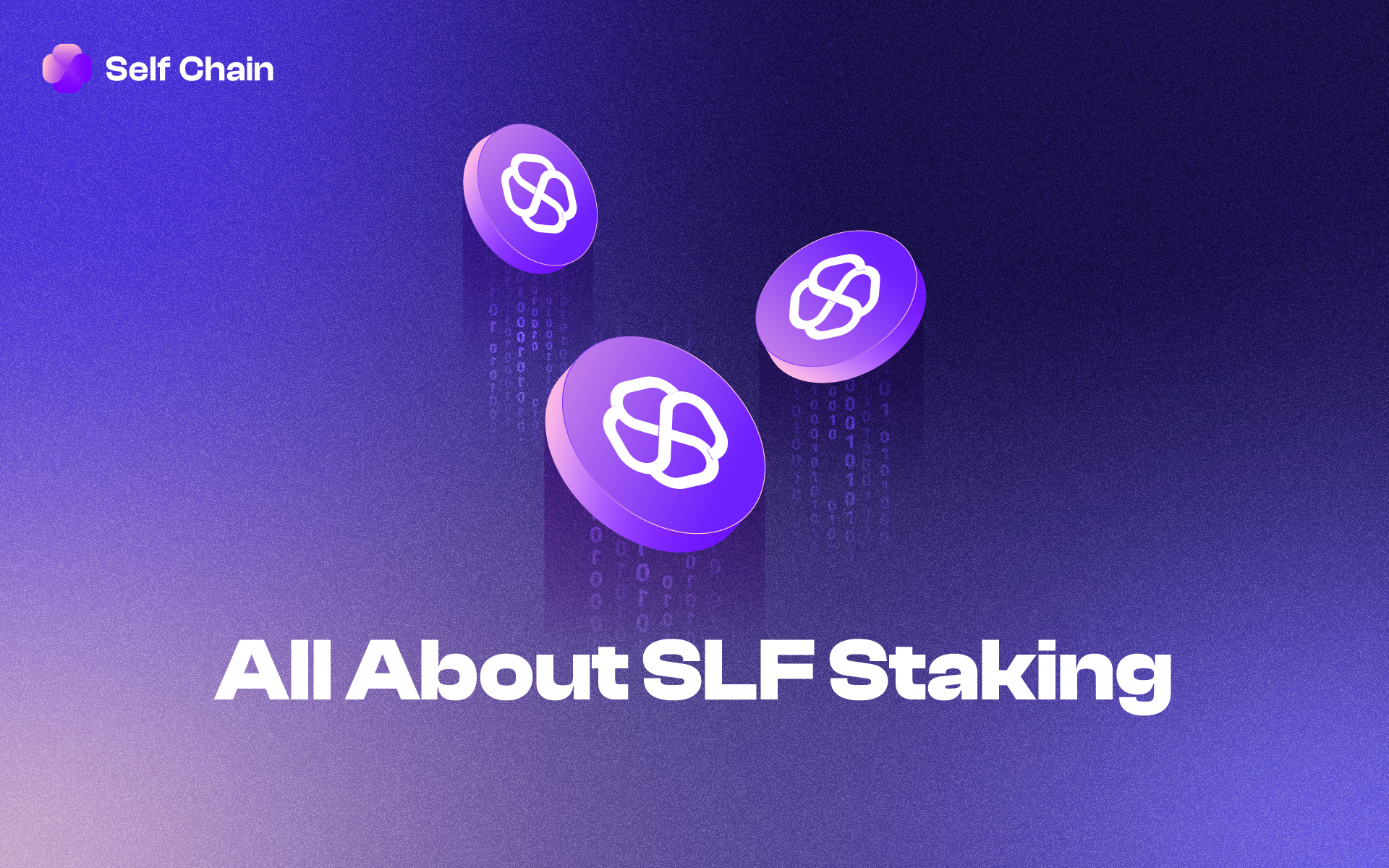All about SLF staking
Self Chain lets users stake their tokens with specific Validators on the network. The staking mechanism rewards users and uses an economic model to incentivize Validators to deliver optimal performance.

Self Chain lets users stake their tokens with specific Validators on the network. The staking mechanism rewards users and uses an economic model to incentivize Validators to deliver optimal performance.
Validators are the backbone of the network, maintaining the security of the blockchain despite its decentralized nature. They process transactions, store data, and perform consensus to verify network actions.
As a permissionless system, anyone can set up a Validator. However, they need robust hardware and solid knowledge to get started. Individual Validators can put up most of this stake, but they may also accept stakes from users. Self Chain also features foundation and professional nodes, which help maintain the network's stability and security.
🔗 Become Validator: https://docs.selfchain.xyz/nodes-and-validators
Incentivizing Performance
Self Chain uses Delegated Proof of Stake (DPoS) to secure and operate the network. This model allows token holders to stake their SLF to a Validator, preventing them from being transferred or sold until they are unstaked. The size of a Validator's stake equals their network voting power. The greater the stake, the more influence a Validator has in network operations.
In exchange for processing transactions and performing consensus, Validators earn rewards based on the gas fees collected. Efficient Validators process more transactions, promoting network efficiency and earning greater rewards for their stake.
Lesser-performing Validators, who may experience downtime or technical issues, process fewer transactions and earn smaller rewards for themselves and their stakers. Poorly performing Validators risk losing their stake and may fall below the minimum required to participate in network operations. This tokenomics model ensures only the best Validators support the network.
- Total Staked / Supply: 211,849,345 SLF / 276,573,327 SLF
- Staking APR: 12.53%
- Explorer 1: https://explorer.selfchain.xyz/
- Explorer 2: https://explorer.selfchain.io/
User Stakes
🔗 Stake here: https://staking.selfchain.xyz/
🔗 Guide https://docs.selfchain.xyz/staking-and-delegation
🔗 FAQs https://docs.selfchain.xyz/getting-started/frequently-asked-questions
Staking allows Self Chain users to actively support the network. When a user adds their SLF to a Validator's stake, they help that Validator operate and earn a percentage of rewards based on their stake. The exact formula for earnings can be found in the Self Chain documentation under Delegated Proof of Stake.
Users reinforce the Validator incentive model by earning rewards. If a user stakes SLF with a poorly performing Validator and earns minimal rewards, they can unstake from that Validator at the next epoch, which takes 21 days. This number can be changed in the future by DAO. Validators losing user stakes are motivated to improve performance or lose their status.
Validators performing well earn more for their staked users, encouraging users to increase their stakes and attract new users. Some Validators may attract stakes in unique ways. For example, branded Validators can appeal to specific communities and interests, making it easier for stakers to align with opportunities that resonate with them.
Running Validators that support Self Chain's growth involves a resource cost. The Self Chain tokenomics model relies on many inputs, based on incentive modeling, to maintain network health and deliver a rewarding experience for all. Staking, and its component rewards, is a key aspect of the system, enabling direct user participation.
About Self Chain
Self Chain is the first Modular Intent-Centric Access Layer1 blockchain and keyless wallet infrastructure service using MPC-TSS/AA for multi-chain Web3 access. The innovative system simplifies the user experience with its intent-focused approach, using LLM to interpret user intent and discover the most efficient paths.
Self Chain ensures that onboarding and recovery are effortless with keyless wallets that grant users complete self-custody over their assets. In addition, it provides automated rewards to dApps when they efficiently resolve user intent, further enhancing the user experience. Moreover, Self Chain incorporates Account Abstraction with MPC-TSS to provide secure signing and reduce transaction fees. It's a platform that redefines blockchain interaction, making it more secure and user-friendly for everyone.
In a world where blockchain technology is becoming increasingly essential, the user experience remains a critical factor in its adoption. Intents and Keyless Wallets are set to transform the landscape, making blockchain interactions more accessible, efficient, and secure. As we move forward, the blockchain industry has the opportunity to provide users with a seamless and enjoyable experience, unlocking the full potential of this groundbreaking technology.
